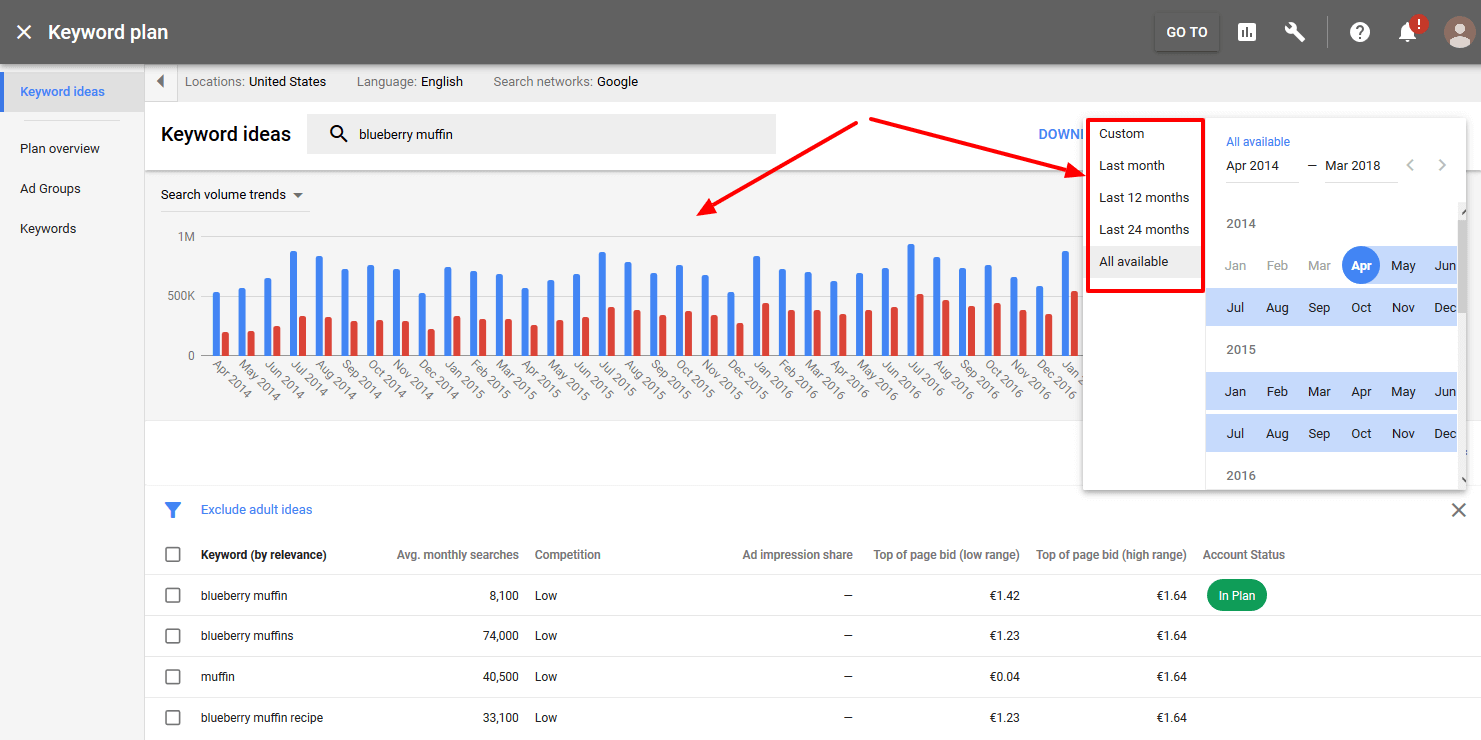Understanding how to find keyword volume is crucial for any effective SEO strategy. Keyword volume, or search volume, indicates the number of times a keyword is searched for within a given time frame, usually a month. This data helps prioritize which keywords to target, enabling you to optimize your SEO efforts effectively. In this guide, we'll explore professional methods and tools to find keyword volume accurately.
Importance of Finding Keyword Volume
Before delving into the methods, let's highlight why knowing how to find keyword volume is vital:
- Prioritize SEO Efforts: Focus on keywords that can drive the most traffic.
- Identify Trends: Discover seasonal or trending keywords.
- Assess Competition: Gauge the level of competition for high-volume keywords.
- Optimize Paid Campaigns: Allocate your PPC budget more effectively.
Professional Methods to Find Keyword Volume
1. Google Keyword Planner
Google Keyword Planner is a top tool for those learning how to find keyword volume.
- Accessing the Tool: Log in to your Google Ads account and navigate to Keyword Planner.
- Discovering Keywords: Enter seed keywords related to your industry.
- Getting Volume Data: Review the average monthly search volume for each keyword.
Example: For a digital marketing agency, inputting “digital marketing services” might show a search volume of 10,000 per month.
2. SEMrush
SEMrush offers a comprehensive solution for those seeking how to find keyword volume.
- Keyword Overview: Enter the keyword in SEMrush’s search bar to get detailed search volume data.
- Keyword Magic Tool: Explore related keywords and their volumes.
Example: Searching “content marketing” in SEMrush reveals a search volume of 22,000 per month.
3. Ahrefs
Ahrefs is another powerful tool to help you understand how to find keyword volume effectively.
- Keywords Explorer: Enter your keyword to see its search volume along with other metrics.
- Exploring Related Keywords: Find related keywords and their volumes to broaden your SEO strategy.
Example: Using Ahrefs to search for “SEO tips” might show a search volume of 15,000 per month.
4. Moz Keyword Explorer
Moz provides valuable insights for those learning how to find keyword volume.
- Keyword Explorer: Input your keyword to get search volume estimates and other relevant metrics.
- Finding Suggestions: Discover related keywords and their search volumes.
Example: Searching “social media marketing” in Moz might display a volume of 12,000 searches per month.
5. Ubersuggest
Ubersuggest is a user-friendly tool for understanding how to find keyword volume, offering free access to essential data.
- Keyword Analyzer: Enter your keyword to see its search volume along with CPC and competition.
- Generating Ideas: Get related keywords and their volumes.
Example: A search for “email marketing” in Ubersuggest might reveal a search volume of 20,000 per month.
6. Google Trends
Google Trends is invaluable for those wanting to know how to find keyword volume trends over time.
- Exploring Topics: Enter your keyword to see its popularity trends.
- Comparing Keywords: Analyze multiple keywords to understand their relative search volumes.
Example: Comparing “influencer marketing” and “affiliate marketing” in Google Trends might show that “influencer marketing” is gaining popularity.
7. Keyword Surfer Extension
Keyword Surfer is a Chrome extension that simplifies how to find keyword volume directly in Google search results.
- Installing the Extension: Add Keyword Surfer to your Chrome browser.
- Using Google Search: Enter your keyword, and Keyword Surfer will display the search volume in the results page.
Tips for Using Keyword Volume Data
1. Use Multiple Tools for Accuracy
Different tools might show slightly different volumes. Combining data from multiple sources ensures more accurate estimates.
2. Focus on Long-Tail Keywords
Long-tail keywords often have lower search volumes but can be more targeted and less competitive.
3. Consider Keyword Intent
High search volume is essential, but the intent behind the keyword is equally important. Ensure your keywords align with your content and business goals.
4. Monitor Keyword Trends
Keep an eye on trends to adjust your strategy according to changing search behaviors.
5. Regularly Update Your Data
Keyword volumes can change over time. Regular updates to your keyword data keep your strategy relevant and effective.
Conclusion
Mastering how to find keyword volume is essential for building a robust SEO strategy. By leveraging tools like Google Keyword Planner, SEMrush, Ahrefs, Moz, Ubersuggest, Google Trends, and Keyword Surfer, you can gather accurate search volume data and make informed decisions. Use these insights to prioritize keywords, understand trends, and optimize your content to drive more traffic and achieve better SEO results. Happy keyword researching!
By following these steps, you will become proficient in how to find keyword volume and apply this knowledge to enhance your SEO strategy.







No comments:
Post a Comment